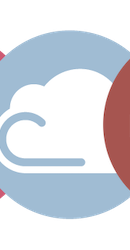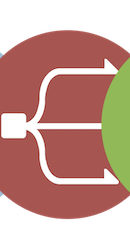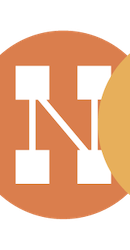Tech Field Day Coverage
Our delegate panel includes independent writers and thought leaders, and we collect their coverage of the event, Tech Field Day presentations, and sponsoring companies here.
See in the Fog with Ixia CloudLens
David Varnum draws a great analogy. In a lot of ways, flying through cloud and managing cloud infrastructure and applications are similar. Both don’t seem to bad to navigate from the outside, but once inside, you lose perspective. This requires both a pilot and systems engineer to have precise instrumentation to properly navigate where they want to go. With Ixia’s CloudLens, David sees someone finally providing that instrumentation.
Read More:
See in the Fog with Ixia CloudLens
Tech Field Day 13 Preview: Zerostack
Tech Field Day is coming up in February, and Thom Greene is excited to hear from ZeroStack. He likes how they take advantage of some of OpenStack’s abilities, while still maintaining a lot of the cost effective advantages of on-premises setups. They host user interface and daily operations in the cloud, with everything else managed in Zblock, their hyperconverged platform. We’ll see what they present at Tech Field Day.
Read More:
Tech Field Day 13 Preview: Zerostack
Bringing 2017 To Everyone
Tom Hollingsworth had a busy 2016. He wrote a small book, ran a Networking Field Day event, and worked with the community to encourage them to write their thoughts. For 2017, he plans to be even busier. As he continues to lead Networking Field Day events, he’s diving deep into the technical knowledge base. Plus, he plans on attending Cisco Live, Interop, and Open Networking Summit. On top of that, look for lots of writing from Tom in 2017. Looks like it’ll be a busy year ahead!
Read More:
January Events: Networking Field Day 14, Viptela, TWiT.tv
Greg Ferro wrote up a rundown of his events for January, and first on his list is Networking Field Day! He finds it an extremely efficient use of time, packed with the most exciting companies in enterprise networking. Hard to believe this is the fourteenth Networking Field Day, and we’re glad that Greg will be in attendance!
Read More:
January Events: Networking Field Day 14, Viptela, TWiT.tv
Using Sensors for Client-side Wi-Fi Troubleshooting
In this piece, Drew Lentz makes a great point about wireless networks. It’s not just about what’s going on behind that access point. That’s only half the network. True, it’s the more controllable and orderly part, so it’s natural to focus on it. But the other half is on the client-side. The devices that connect to the wireless network may be hard to predict, but making sure end-users are getting a productive experience is the whole point of the network. With that in mind, Drew profiles two approaches. A more hardware agnostic approach from NetBeez, which provides a Linux agent that talks to their dashboard to report analytics. It’s an interesting solution that doesn’t require lock in to any particular networking hardware setup. Cape Networks takes the opposite approach, providing an all-in-one hardware package that includes cellular connectivity, allowing you to set it up with just power. Both provide ways to see what’s happening from the client-side, and give you a complete picture of a wireless network.
Read More:
Using Sensors for Client-side Wi-Fi Troubleshooting
Tech Field Day 13!
Thom Greene shares his experience of requesting to be a delegate to Tech Field. He’ll be coming to our event in Austin, and he’s excited to learn more about Zerostack, Robin, and Uila. He’s also happy to have received some holiday peanut brittle. The Tech Field Day delegate perks are truly unique!
Read More:
2017 Predictions, Prospects, and Prognostications
One of the best part of the New Year is the spate of predictions. Taylor Riggan has his own set, and they forecast a really interesting 2017 for enterprise IT. Taylor has some thoughts on where OpenStack, Hybrid Cloud, and Object Storage usage. He provides some really in-depth thoughts, so make sure you check it out!
Read More:
2017 Predictions, Prospects, and Prognostications
Jedu na Tech Field Day 13! ( TFD13 ) – Co to je?
Karel Novak is going to his first full Tech Field Day in February. He shared his post in Czech, but here’s the link for a Google Translate version to English: http://bit.ly/2iEpXGZ
Read More:
Jedu na Tech Field Day 13! ( TFD13 ) – Co to je?
Here’s to 2016 (A year in the life…)
Jon Hildebrand shares his reflections on 2016. For him, it was a year of growth. He shares his thoughts on how 2015 ended on a bit of a downer, feeling a little bit reticent to contribute in discussions at Virtualization Field Day. For 2016, he decided to make some changes. He set about making friends through VMUGs and getting involved in the community, including speaking at two UserCons. Gaining confidence with this engagement, Jon had a much more productive time, attending three total Tech Field Day events in the coming year. It was great to see Jon at events during the year, and we’re glad to help make 2016 a year of growth for him!
Read More:
Here’s to 2016 (A year in the life…)
2016 – How did I do?
It’s one thing to make New Year’s Resolutions, it’s another thing to follow up on them the next year. Matt Crape looks back at 2016 to see how he did with his resolutions from last year. Overall, he accomplished one of the three goals he set out for himself. But for that goal of better community involvement, Matt really knocked it out of the park! He earned a VMCE certification, presented at a vBrownBag Tech Talk, hosted a Veeam user group, and attended Tech Field Day in November! For 2017, Matt wants to stay involved with the vCommunity. If that’s his only resolution for the New Year, it looks like Matt has a good chance of going one for one in 2017.
Read More:
Tech Field Day 13 Delegate!
One of the best things about Tech Field Day is meeting new and interesting voices in enterprise IT. Rebecca Fitzhugh qualifies as both, and we’re thrilled she’ll be joining us at Tech Field Day in February! She’s excited to share about the experience, we can’t wait to hear her impressions. Stay tuned!
Read More:
Looking Forward to 2017
In a year that has been derided as particularly jarring, Thom Greene managed to make a pretty good go of it in 2016. He got a promotion at work, completed several certifications, did several presentations, and was invited to Tech Field Day in February. Some might take a nice 2016 and rest on their laurels the following year. But in this post, Thom outlines his vision for a 2017 that will be just as eventful.
Read More:
Apstra’s Ethereal Network State
Apstra has a really interesting idea. What if you could design your network based on what you wanted to do with it? Instead of chaffing with the constraints of vendors and hardware, Apstra provides an abstraction layer to allow you to do this. Ethan Banks saw their presentation at Networking Field Day. He wrangled with the idea that Apstra is simply providing configuration management. But instead, they are providing a solution that takes a look at the network as a whole, something network engineers rarely can do. Instead, you state what you want to do with the network, and the Apstra Operating System tells you how to make that happens. It then knows the intent of the network, and is able to heal and remediate to keep that intent in place. Ethan thinks they’re entering into a crowded market, but that kind of model could really allow them to stand out.
Read More:
Apstra's Ethereal Network State
Solarwinds Virtualization Manager – not to be missed in a cloud
Raff Poltronieri was looking for a way to deal with data coming out of vCenter Realize Operations. He tried out the Virtualization Manager from SolarWinds, and really liked the implementation. Raff liked that automation is baked right in. The other impressive thing about the solution was the ability to manager a variety of VMs within a single interface. The dashboard view allows you to drill down as much as you want without leaving. If you decide to install agents on the VMs, you can also get performance metrics down to the application level, very impressive. Raff is looking forward to seeing them at Tech Field Day in February!
Read More:
Solarwinds Virtualization Manager – not to be missed in a cloud
Future Storage, Flash, and Cloud?
As someone who would have bet good money that Zip disks were going to take over storage in the late 90s, my own ability to predict the future of storage is dubious at best. Alastair Cooke is under no such scrutiny. He reviews what some are seeing as the future of storage: a combination of flash and object cloud storage. He sees two potential solutions for this from ClearSky Data and Avere Systems. ClearSky uses a geographically tiered flash system to quickly represent your data, and Avere uses local flash to focus on file share performance. Alastair might question if flash + cloud will be the correct formulation, but he liked what he saw from Avere and ClearSky.
Read More:
Future Storage, Flash, and Cloud?
NFD13: Forward Networks Comes Out of Stealth to Impress
Peter Welcher reviews what he saw from Forward Networks once they came out of stealth. Peter seemed impressed with how Forward is able to put together a database model of network configurations that can be searched and indexed independent of actually operating on the network. This can then be used for fast troubleshooting, as well as testing configurations to make sure they’re operating within a desired state. Overall, Peter sees this as a way to not spread you senior enterprise talent too thin. While there isn’t any automated remediation backed in, the powerful forecasting tools they present make it possible to better utilize talent in your organization.
Read More:
NFD13: Forward Networks Comes Out of Stealth to Impress
Is a Cloud Gateway Enough?
For W. Curtis Preston, simply having the ability for a storage system to store data in the cloud isn’t news anymore. It’s to be expected. What’s more useful is a way to address multiple cloud site. Amazon might be the current market leader, but a storage solution shouldn’t assume you’re only going to use a single source for cloud storage. A good cloud gateway should address that, as well as letting you compute where your storage is at. It’s an interesting way to reevaluate how we judge cloud gateways going forward.
Read More:
Docker? On Windows? Yep!
Jon Hildebrand uses the native Windows support for Docker to talk about the sea change Microsoft has experienced recently. Once synonymous with lock-in, the company is now meeting their customers and developers where they are, rather than forcing a change in behavior. Jon is particularly excited to see the two different versions of Windows available to Docker images. Of the two, the Nano Server versions seems the more intriguing, as it strips out most legacy support for a truly lean instance.
Read More:
Secondary Storage is Cohesity’s Primary Goal
It says something about Cohesity that they’ve energized a lot of Tech Field Day delegates. After all, their solution is about secondary storage, which might ordinarily be relegated to an afterthought. But Tim Smith appreciates their focus. He puts in succinctly at the end of his piece: All too often, vendors forget that not all data is created equal, and thus should not be treated equally. It’s a really great point and one that Cohesity takes to heart. Their hardware and storage platforms are designed from the ground up to address the specific needs of secondary storage. This encompasses not just backups, but all data not actively used in production. It’s a huge swath of data that’s just waiting to be property leveraged. Tim thinks Cohesity has developed a way to do this.
Read More:
Secondary Storage is Cohesity's Primary Goal
Can Teridion Really Boost Internet Throughput?
John Herbert invokes a little Morpheus voice to talk about Teridion. They want to make internet transit faster. Sounds easy right? Doesn’t SD-WAN already do this? John points out that SD-WAN simply lays software over the public internet to replace previously private circuits. But the actual speed can be changed by every service provider in that route. Simply prioritizing by the least amount of service provider hops doesn’t mean it’ll actually be faster. Teridion claims that they have a solution to increase throughput by 5 to 20 times more than current internet speeds, just by accounting for this. They do this by having traffic routed through their Teridion Global Cloud Network, which has servers spread through numerous locations and SPs. They pull latency and speed info constantly to make create an optimized route for traffic. This could be very valuable to any SaaS company.
Read More:







